VIVO Pathophysiology
Dental Anatomy of Rodents
| Rodents are a very diverse order that include the large capybara, squirrels, beaver, chinchillas as well as porcupines and of course rats and mice. Rodents have enlarged chewing muscles that allow their jaw to work in a vertical, forward and backward motion. Only the front surface of the incisors has enamel, the back is softer dentine. This arrangement allows the continuously growing incisors to remain sharp as they are worn off. Most rodents eat a plant-based diet while some enjoy delicacies such as snails, turtles, clams, crayfish, ants and scorpions. Rodents have a large cecum where bacteria digest cellulose into useable carbohydrates. After this plant material has been processed in the cecum the animal eats it again to use as energy. This behavior is known as coprophagy. | 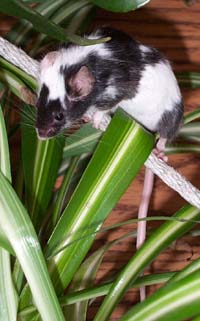 |
|
Rodents are gnawing animals and so have large, chisel-like incisors. The incisors are rootless and grow continually. If they do not have material to chew or if they have a malocclusion, the incisors will not wear normally. The image to the right shows a rat with severely overgrown incisors - animals with this type of problem can actually starve to death. | 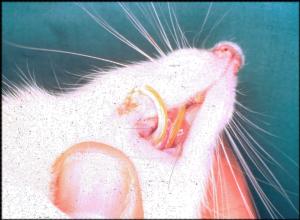 |
| Dental Formula for Mice and Rats | Permanent | 1 0 0 3 1 0 0 3 |
= 8 |
|---|
| Maxillary Arcade | 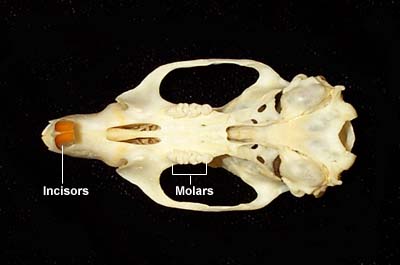 |
| Maxillary Arcade (lateral liew) |
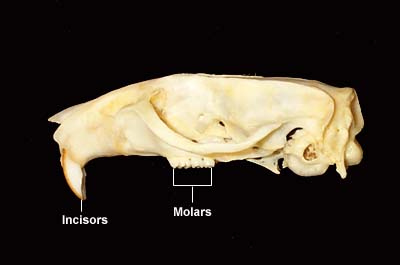 |
| Mandibular Arcade | 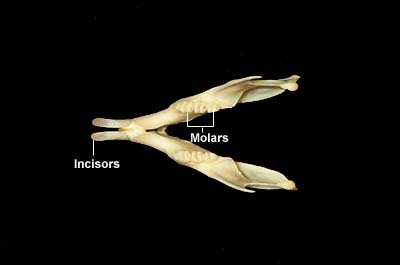 |
| Mandibular Arcade (lateral view) |
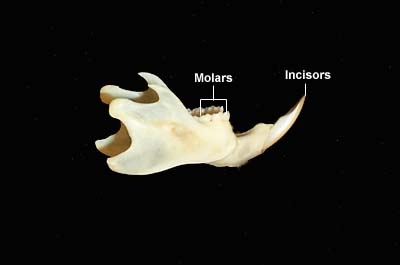 |
Author: Melissa Rouge
Send comments to Richard.Bowen@colostate.edu
